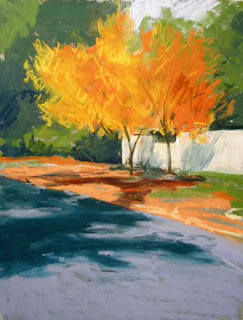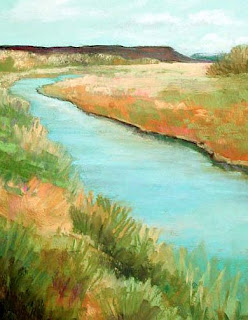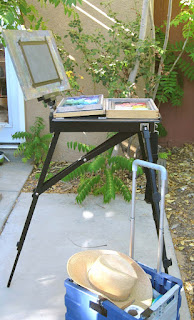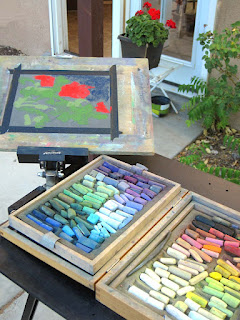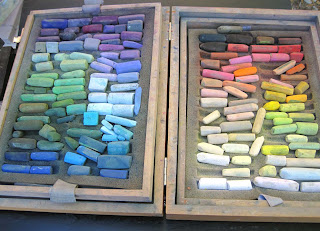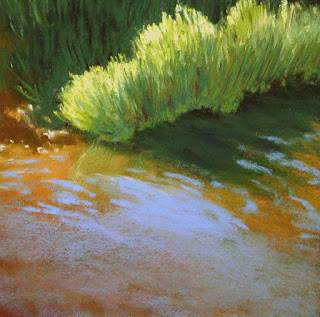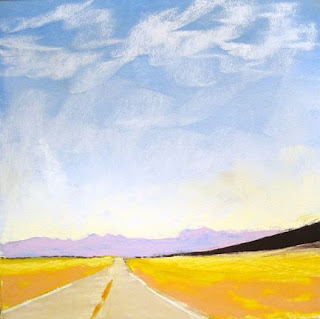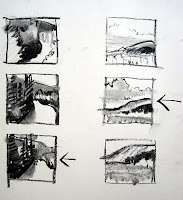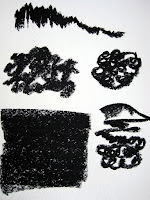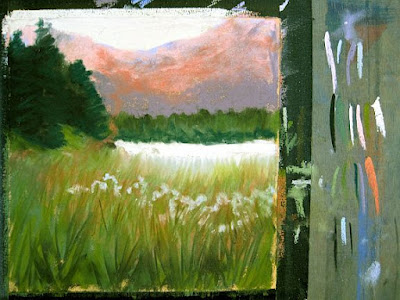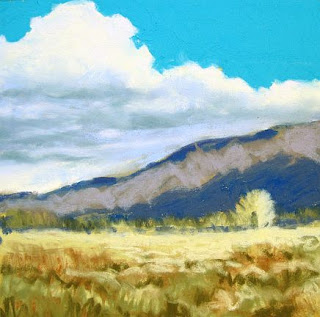You’ve been painting in pastels for a while now and have taken some classes and workshops. Your teachers have encouraged you, some of your work has been accepted to a national show, and even though you haven’t won any prizes you know it’s time to start making a little money with your art. A good next step might be to begin with an art fair. Art fairs, or booth shows, are a great place to embark on selling. Shows allow you to step into the sales arena with a relatively modest cash outlay, effectively introduce your work to a local audience that can be receptive and supportive, and help you find the price range and niche your work may fill in the marketplace. Being accepted to a fair may be the boost you need to get your paintings finished, framed, priced and ready to sell, and could provide the opportunity you need to be seen by galleries as a selling artist.
First consider local shows. If you can, attend the show and take detailed notes about what you see. Try to picture yourself showing there. Ask the promoters or participating artists what has been provided. If this is an outdoor show, find out whether the artists supply everything from the ground up or if a structure is provided. Notice whether aluminum display panels, pegboard sheets or other walls are in place. Most of the time there are small tables or cabinets where customers may pick up cards or brochures and the artist writes up sales. Take note of the height, style, and sizes used to decide what works best. Look at the chairs. A tall, folding director’s chair is often the best choice, as it allows the artist to sit at eye level with customers.
Once you’ve found a show that interests you, request a prospectus. The application should tell you a lot about the show, even if you haven’t been able to attend. For instance, is the show held outdoors or indoors? Do you have to provide your own display system or tent? If this is an outdoor show you’ll need weather protection for your pastel paintings. Determine whether you can you drive up to a booth to drop things off, or will have to carry everything in from a parking area. Find out the cost of entering the show and the cost of the booth, including all your options. In a juried show you submit slides or photographs, or present examples of your work, and there’s usually a jury fee that is separate from the booth fee. You need to know exactly what you will get for your investment.
You also want to know a few things about the show and its history. How long has the show been in business? A successful show will have a good track record. How many artists do the promoters plan to host? You’ll be sharing the available dollars with the other exhibitors. Do they intend to balance art and craft exhibitors, or is this exclusively a painting show? The kind of work featured will determine the response from the community. Notice how many days the show runs and what hours it’s open to the public, and find out whether you may safely and confidently leave your paintings in your booth overnight or whether you’ll need to take down the show each day. If you were able to attend the show, refer back to your notes. What was the venue and were there many people attending? What physical set-up worked best? Were there walls or curtains dividing the booths? Most importantly, could you picture showing your art there?
Once you have applied to and been accepted to a fair, you have some important decisions to make. You will need to look into the various methods for displaying your work. Most artists use flexible, lightweight display panels that may be broken down and carried easily, but provide attractive wall space. Outdoor fairs often require you to provide your own tent, as well. Your notes should give you some ideas of what artists do at these shows. Consider the need for lighting, if the show continues into the evening hours. Be prepared to deal with weather considerations, as well.
You need to exhibit a range of sizes and prices. If you’ve already sold work in an exhibit use that as your foundational price. If not, you’ll need to decide on a fair price for your work. Review the notes you took where you carefully logged the prices of work similar to your own and be fair in your pricing. Don’t undersell too much or unduly overvalue your paintings. Decide whether you are willing to sell your pastels without a frame and if so at what price. Think about the possibility of taking commissions for your paintings if your subject matter warrants. If you’re willing to do this, establish your deposit and payment policy.
A fair is a wonderful opportunity to advertise your work. Show promoters may offer you a chance to advertise in their bulletin, an effective way to get your name in front of everyone who attends. Be certain to have excellent business cards with a color photograph of one of your paintings, as well as your name, phone, e-mail address and web page on them. A brochure that tells about your history as an artist and features more of your work can be made on your computer. You can use the show as a chance to build your mailing list, so put out a guest book where customers can record their name, e-mail or mailing address and comments. Be sure to send thank-you notes to anyone who buys a painting, no matter the size or price. This is a great way to build good customer relations in your community so that you can continue to enjoy the life of a selling artist.







